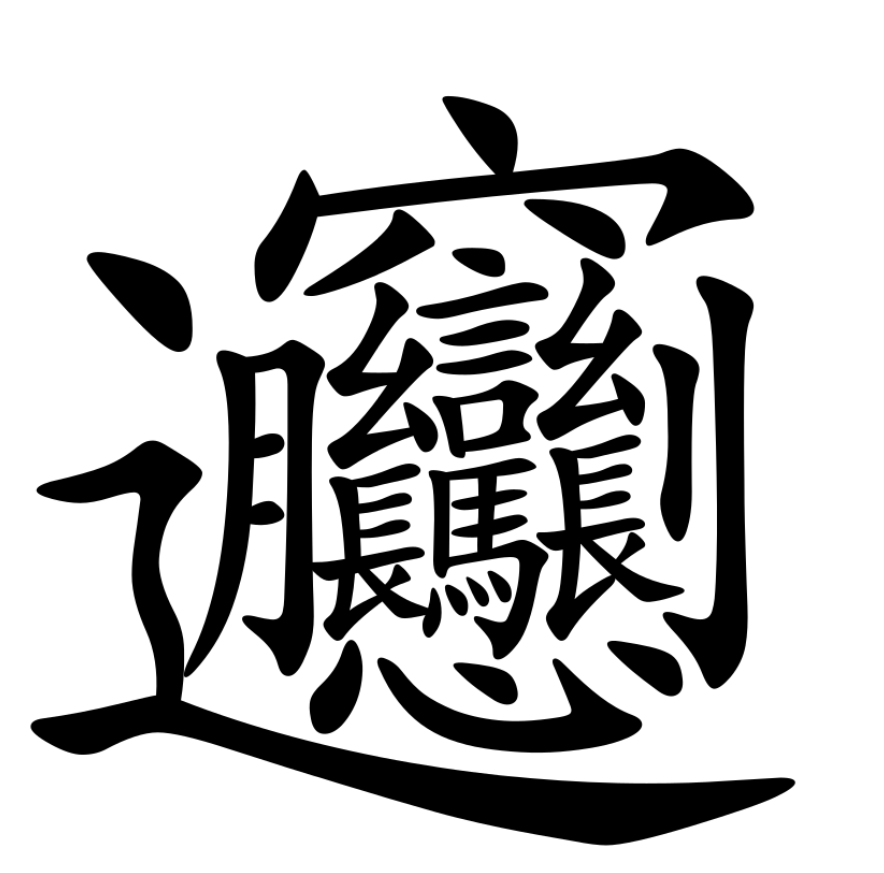The Fascinating and Complex Biang Biang Mian
The character biang is considered one of the most, if not the most, complex among all Chinese characters.
It’s not possible to determine the origin of this word and as such various myths and legends have arisen making it a highly discussed topic among scholars, linguists and Chinese citizens as well.
Even though the word “biang” by itself has no meaning or context, nowadays it’s typically used in referring to biang biang 面 (biang biang mian), a particular type of noodles traditionally served in the Shaanxi province, located in the north- western part of China.
The dish itself has modest origins and wasn’t glamorous at all, in contrast to the uniqueness and high complexity of the character used in its name. It was typically eaten for lunch by poor workers to which they added spicy toppings. The high amount of energy given by a thick dough in combination with the spices, helped them contrast the harsh cold climate of the region by providing a little warmth.
Today, thanks to the preservation of the original character biang biang 面 has become for all intents and purposes a highly sought after dish for tourists and foodies alike, being sometimes labeled as one of the 陕西八大怪 (pinyin: shǎn xi bā dà guài) the “eight strange wonders of Shaanxi”.
As we said, this resurgence in popularity can be tied to the complex character that makes up this word. Something that has been preserved in centuries of Chinese history. A character that, for its intricacy, can’t be found when typing on smartphones, computers or even in modern dictionaries!
Its complexity is derived from the high number of components, which in the Chinese language determine meaning and pronunciation. The traditional form of “biang” is written in 58 strokes; the simplified one consists of 52.

穴 (cave) + 言 (to speak) + 2 幺 (tiny) + 馬 (horse) + 2 長 (to grow) +
心 (heart) + 月 (moon) + 刂 (knife) + 辶 (walk)
Let’s analyze the components of the “simplified form” which includes 5 simple characters and 4 radicals: 穴 (cave), 言 (to speak), 幺 (tiny) written on both sides. At the bottom, 馬 (horse) in the middle and 長 (to grow) on its two sides.
One of the most known Chinese character, 心 (heart) is under the entire structure, with 月 (moon) to its left and 刂 (knife) to the right. Though the last radical is in the far left and so it could lead one to write it first, the entire block is sustained by 辶 (walk). Therefore, it surrounds the whole structure, completing this incredible composition.
Fun fact, there are various stories about how the pronunciation of the word “biang” came out to be. The most commonly believed one is that it originated from the sound made while chewing these noodles. Others think that “biang” mimics the sound made when the dough is pulled and slapped against the working surface while making them.
When learning how to write Chinese characters, stroke order is the essential to obtain legible characters. Furthermore, if the order is not correct, another word could be written. It is well recommended to pay attention to the strokes order as well as to each element within the character. In this case, though it might seem impossible at first, it might be useful to write “biang” for practice and it actually becomes easier as we write and check for mistakes. After a few attempts, it will probably be a funny way to test your own skills and challenge your friends!
This guest post comes from Ilaria, an avid reader and traveler, with a strong passion for Asian Studies, particularly Chinese, culture, literature, history and customs in China.



